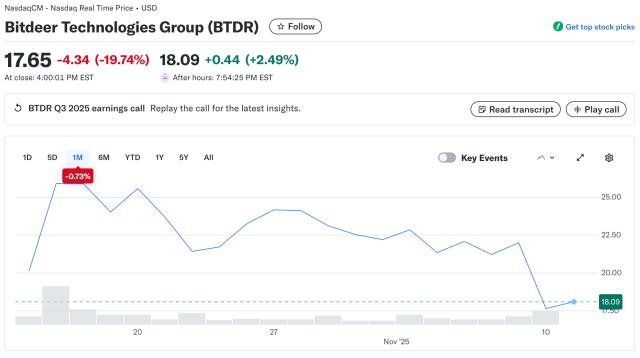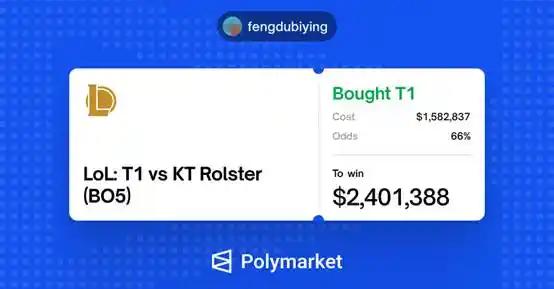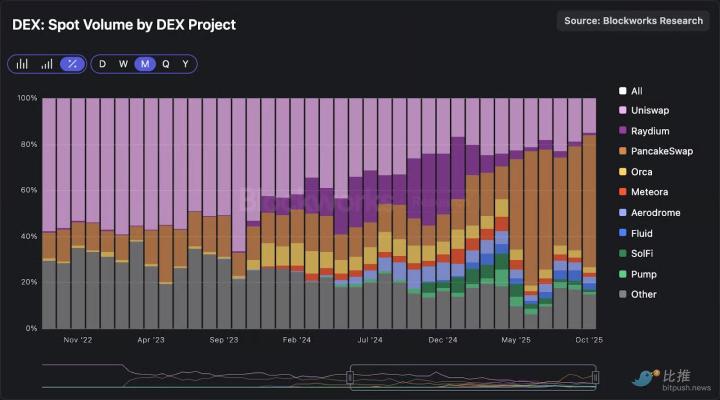Author: TechFlow TechFlow
Original Title: The Most Understandable Fusaka Guide Online: A Comprehensive Analysis of Ethereum Upgrade Implementation and Ecosystem Impact
Ethereum spot ETFs saw net inflows again after a weak week, indicating a gradual recovery in market sentiment. Ethereum's next upgrade is also on its way.
Looking back at history, almost every technological upgrade has acted as a catalyst for price increases, with the improved on-chain performance after the upgrade being directly reflected in ETH's valuation expectations.
This time, the Fusaka upgrade, which will take place on December 3, will be more extensive and have a deeper impact.

It's not just an efficiency optimization, but a major upgrade to the entire Ethereum mainnet: Gas costs, L1 throughput, L2 capacity, node entry barriers... almost every core indicator that determines the network's vitality has taken a significant leap forward.
If past upgrades made Ethereum "cheaper" or "faster," then the significance of Fusaka lies in making Ethereum more scalable and sustainable.
As protocol functions become increasingly complex, the requirements for the underlying chain's carrying capacity are also rising. With the rise of AI Agents and high-frequency interactive DApps, this upgrade will directly affect Ethereum's position in the next wave of Web3 applications.
So, what exactly has changed? If you want a quick overview, here's a one-page infographic summarizing all the core changes in the Fusaka upgrade:

Next, we will explain the core logic of the Fusaka upgrade from both technical and practical perspectives.
This is not just a technical report for developers. We'll explain it in a way that even tech novices can easily understand, helping you quickly grasp the key changes behind this upgrade. If you're not interested in the operational mechanisms, you can skip to the second half to see how this upgrade will impact the Ethereum ecosystem and the experience of every user.
Fusuka Core Upgrade: Further Scaling Up
The core purpose of the following technical improvements is singular: to achieve further scalability while ensuring security and decentralization.
PeerDAS: From Full Storage to Sample Validation
Blob is a new type of data block in Ethereum that stores large amounts of on-chain data. It packages Layer 2 transactions into a "big box," much like a courier company delivers a large number of packages at once, efficiently uploading them to the chain without occupying permanent storage space.
Before the Fusaka upgrade, each node had to store all the data for each package, just like a courier company would, resulting in warehouse overload, bandwidth shortages, and a sharp increase in node costs.
PeerDAS proposes a more elegant solution: instead of saving the cross margin, it uses fragmented sampling across the entire network.
Storage: Each blob is divided into 8 parts, and each node only randomly stores 1/8 of them, while the rest are distributed and stored by other nodes.
Verification: Through random sampling verification, the error probability is as low as 1/10²⁰–10²⁴. Nodes can use erasure coding to quickly retrieve missing fragments and easily reconstruct complete data.
It sounds simple, but it represents a major improvement in the field of data availability. This actually means:
Node load decreased by 8 times;
Network bandwidth pressure dropped sharply;
With storage shifting from centralized to distributed, security is further enhanced.
Blob pricing mechanism
In the Dencun upgrade, Ethereum introduced blobs, allowing rollups to upload data at a lower cost. Its fees are dynamically adjusted by the system based on demand. However, some limitations have emerged in practice:
When demand drops sharply, costs fall to almost zero, which fails to reflect the true state of resource usage.
When demand surges, blob fees can be instantly driven up, causing Rollup costs to skyrocket and block production to be delayed.
The sharp fluctuations actually stem from the fact that the agreement cannot perceive the complete price structure and only adjusts prices based on short-term "consumption volume".
EIP-7918 in the Fusaka upgrade aims to address the issue of fluctuating costs. The core idea is to prevent Blob costs from fluctuating indefinitely and instead set a reasonable price range for them.
It adds a minimum reserve price layer to the pricing system:
When the price falls below the execution cost threshold, the algorithm will automatically apply the brakes to prevent the cost from being reduced to near zero.
At the same time, the speed of price adjustments is limited during periods of high load to prevent costs from skyrocketing.
Another EIP-7892 makes Ethereum more Layer 2 friendly. It allows the network to dynamically fine-tune the capacity, quantity, and size of blobs, like adjusting a knob, without needing to initiate a full hard fork for parameter adjustments as before the upgrade.
When L2 requires higher throughput or lower latency, the mainnet can respond instantly to match these needs, thereby significantly improving the system's flexibility and scalability.
Security and ease of use
Security
Scaling up Ethereum allows it to process more transactions, but it also increases the potential attack surface. DoS attacks, or denial-of-service attacks, can cause network congestion, transaction delays, and even node paralysis, significantly degrading the user experience and security of the entire chain.
Ethereum already has a strong anti-DoS design. These improvements are not to fix defects, but to add another layer of protection on the existing security framework.

In simple terms, if Ethereum is a highway, then Fusaka's four EIPs are like simultaneously controlling the vehicle's speed (EIP-7823), weight (EIP-7825), toll (EIP-7883), and length (EIP-7934) on the highway. By limiting computational load, single transaction volume, operation costs, and block size from multiple dimensions, the highway can enable all vehicles to pass quickly while increasing traffic flow, allowing Ethereum to remain stable, smooth, and resistant to attacks while scaling.
Ease of use

For users, let's use the highway analogy again: to put it simply, pre-confirmation means that you can reserve a parking space in advance at the highway entrance, and the exit time is locked before the vehicle enters the station, so the confirmation is completed almost instantly when the block is released.
For developers: Fusaka optimizes the execution environment: improves contract computation efficiency, reduces the cost of complex operations, and supports hardware keys, fingerprints and mobile device login, simplifying account management and user interaction.
Actual impact
Putting technology aside for now, how significant are the changes in user experience and ecosystem? A simple chart will make it clear:

Due to space limitations, I've selected some topics that are likely of interest to you and will elaborate on them here:
Staking will become safer and more stable.
In the past, becoming an Ethereum validator was more like a professional sport—the high hardware requirements, complex operation and maintenance processes, and data synchronization time of several days deterred ordinary users. The Fusaka upgrade is making all of this truly accessible to the general public.
With the implementation of the PeerDAS mechanism, nodes only need to sample, download, and store about 1/8 of the data fragments when verifying blob data availability, thus significantly reducing bandwidth and storage overhead. What are the results?
Before the Fusaka upgrade, according to the official Ethereum.org blog, 32 ETH validators could stably run a node on a device with only 8 GB of memory. The upcoming Fusaka upgrade will further reduce the bandwidth and storage requirements for validators. Let's look at the data intuitively:
On the Fusaka testnet, the bandwidth required to become a validator node is approximately 25 Mb/s.
In comparison to the domestic network environment, in the fourth quarter of 2024, the average download speed of fixed broadband in my country had already reached 99.14 Mb/s.
In other words, most home devices can also run Ethereum validator nodes and enjoy native staking rewards.
Fusaka makes home-based nodes a reality—no longer just for professional operators, but also allows more home devices to join the network for verification, jointly ensuring Ethereum security, and directly sharing staking rewards.
This is a true enhancement of decentralization. Lowering the barrier to entry means more independent validators will join, and more validators will bring a more stable, resilient, and decentralized Ethereum.
From an investor's perspective, this also optimizes the staking risk structure: when validator nodes are no longer concentrated in a few large operators, the chain is more stable under high load; volatility decreases and the yield curve is smoother.
High-frequency interaction: Fusaka ushers in the era of "real-time Ethereum".
In the Web3 world, DeFi, payments, and AI agents share a common bottleneck: they all require networks that respond in real time.
In the past, Ethereum was secure but not smooth enough. The 12-second block-per-second pace was sufficient for single large transactions; however, it was clearly too slow for the continuous command calls of the AI Agent and the millisecond-level settlement of on-chain payments.
Fusaka changed all of that.
With PeerDAS, increased gas capacity, and reduced L2 costs, Ethereum has become more suitable for supporting high-frequency interactive applications.
We may soon witness a more immediate and explosive Ethereum ecosystem.
Let's talk about DeFi in detail:
Fusaka not only increases throughput, but also directly optimizes the user experience of DeFi. Lending, synthetic assets, and high-frequency trading protocols can all "run faster and at lower costs."
Here are some examples of common protocols:
Aave: The loan clearing window has shortened, and clearing fees have decreased. This is due to lower L2 upload costs, allowing clearing transactions to be packaged faster and reducing slippage and latency risks.
Synthetix: Reduced instant settlement time for synthetic assets and lower contract interaction fees. Increased Blob capacity removes limitations on large contract calls, making fund transfers more efficient.
High-frequency DEXs: Increased liquidity pool depth eliminates significant slippage from large-scale transactions. This is driven by increased block gas limits and lower L2 upload fees, leading to a substantial improvement in liquidity utilization.
End
The Fusaka upgrade has enormous potential; it could become Ethereum's third milestone upgrade, the most ecosystem-driven since Merge and Dencun.
From an eightfold increase in on-chain data capacity, a sharp drop in transaction fees, and a several-fold increase in throughput, to a lower threshold for validators—all these changes combined will unleash the vitality of the Ethereum ecosystem in this new phase following the Fusaka upgrade.
We should all carefully observe whether Ethereum will usher in a new growth cycle after Fusaka.
Twitter: https://twitter.com/BitpushNewsCN
BitPush Telegram Community Group: https://t.me/BitPushCommunity
Subscribe to Bitpush Telegram: https://t.me/bitpush







